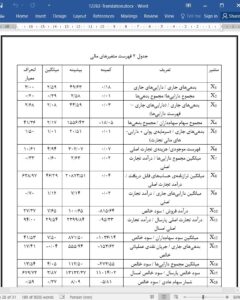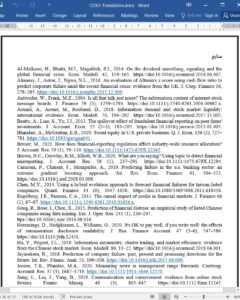Abstract
In addition to financial features, we propose a novel framework that combines sentiment tone features extracted from comments on online stock forums, management discussion and analysis, and financial statement notes, to predict financial distress. We evaluate the proposed framework using data from the Chinese stock market between 2016 and 2020. We find that financially distressed companies are more likely to have weak sentiment tones as investors have a negative attitude toward the operation and financial status of the companies, while normal companies are to the contrary. Additionally, the sentiment tones of comments within one month most effectively reflect such correlations. We recommend incorporating sentiment tone features as they contribute to predictive performance improvements of all models using financial features only, and using the CatBoost model as it outperforms all benchmarked models with its ability to capture complex feature relationships. Economic benefits analysis shows that the proposed framework can correctly identify more financially distressed companies.
1. Introduction
With the continuous expansion of the scale of the securities market and the gradual development of the capital market, companies are facing highly complex and changeable economic environments and huge competitive pressure (Liu et al., 2020). Without a good mechanism to adapt to this environment, companies are more likely to encounter problems, such as insufficient liquidity and excessive liabilities, which eventually lead to financial distress (Wang et al., 2018). As one of the most concerning issues in the economic field, financial distress can adversely affect the sustainable development of companies, threaten their survival, and result in huge losses to investors, creditors, customers, and other stakeholders (Kim and Upneja, 2014). When the number of companies in financial distress accumulates to a certain level, social financial distress may occur and the stability and sustainability of macroeconomic development may be endangered (Mai et al., 2019).
6. Conclusion
The ability to predict financial distress timely and effectively is important for the decision-making of companies and stakeholders. Therefore, researchers have paid close attention toward developing a financial distress prediction model with higher discrimination performance for a long time. Obtaining valid features and building highperformance models have proven to be important directions for improving the ability to accurately predict financial distress. In this paper, we study the use of COSF to supplement basic financial information and other text information and CatBoost to improve the discrimination performance of predicting the financial distress of listed companies. We propose a framework that combines sentiment tone features extracted from COSF, MD&A, and FSN. Specifically, we extract relevant features from COSF and prove that these features can significantly improve the accuracy of predicting financial distress. We examine the impact of COSF during different periods and different sentiment tone features on the financial distress prediction model. We also build six models using CatBoost, LR, DT, SVM, XGBoost, and ANN, and the performance of CatBoost is compared with the other five benchmark models on different feature sets.











